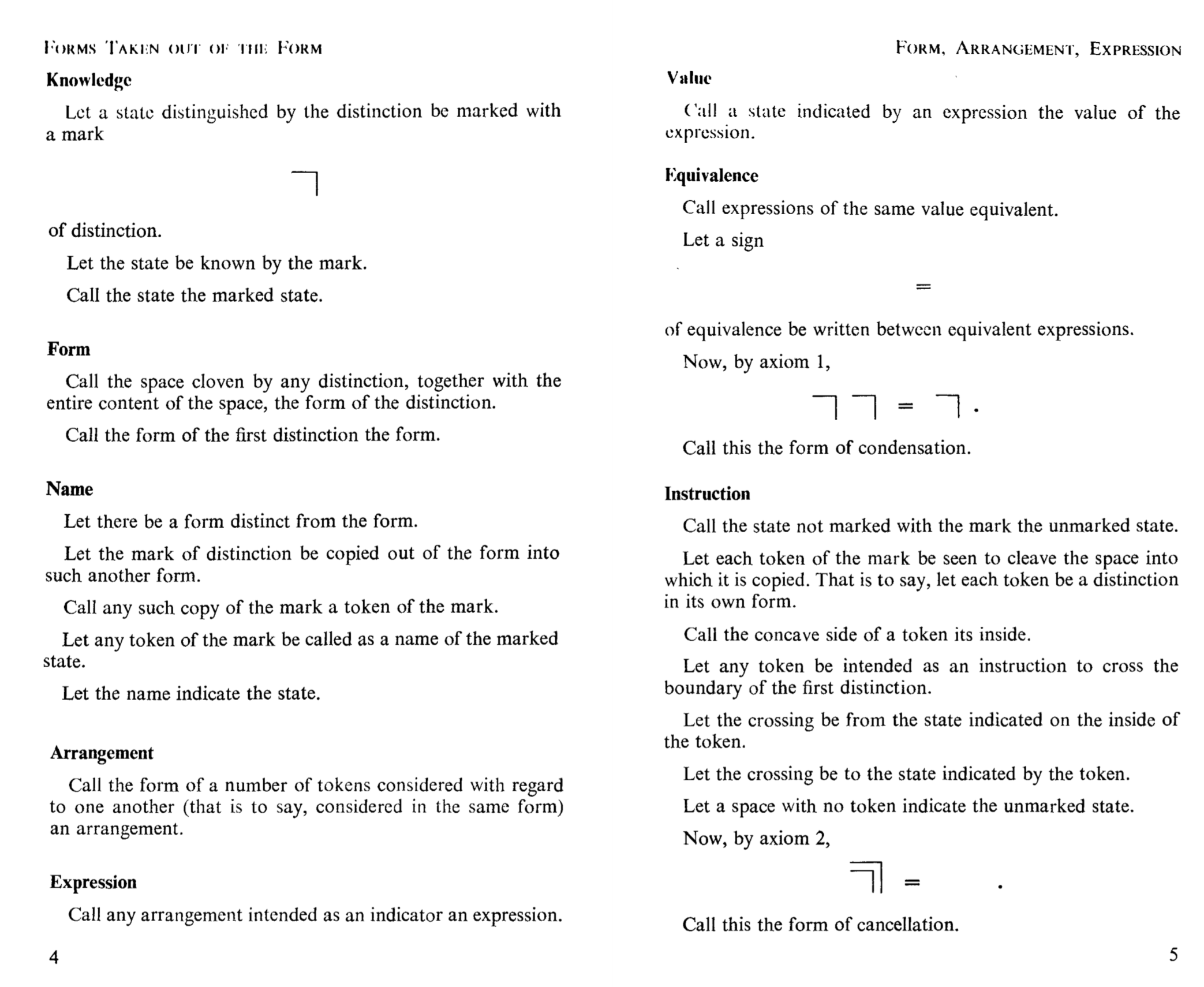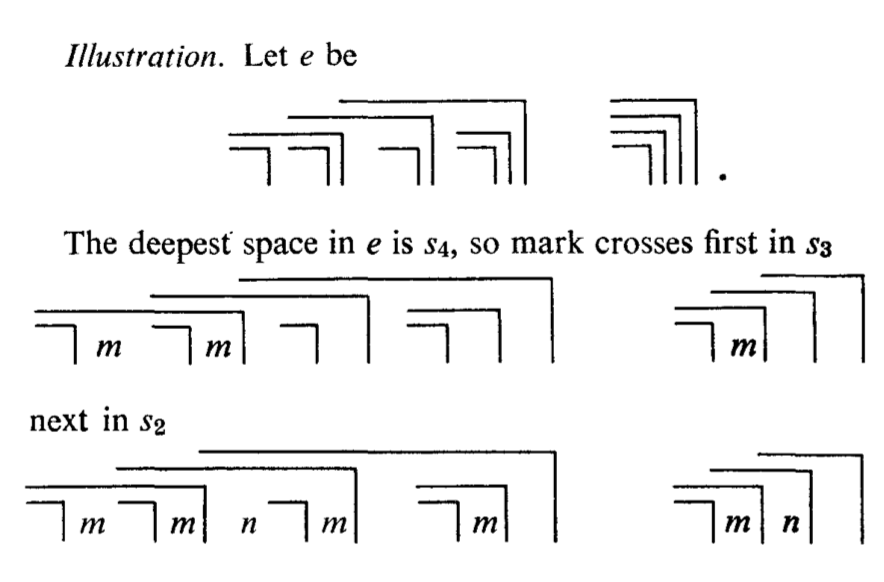Reading 1 Assignment
Part I: Brief explaination of G. Spencer Brown's "Laws of Form"
Part II: Outline of Drucker's argument in "Image, Interpretation, and Interface"
Selected Work: "Laws of Form" - G. Spencer Brown
In this treatise, Brown attempts to ellucidate the principles of Boolean algebra using visual elements. He believed that by using visual elements, he could reveal the universal form of logic and mathematics. To do this he recreated a series of proofs using a new graphical notation consisting of compositions of a single symbol. In doing this, he hoped that the obvious form of the argument would be made apparent. The success of such an approach, in my opinion, is unclear as many of the explanations still seem opaque, but I was impressed by his attempt to bring out the beauty and form of formal mathematics.
In discussing Boole's proofs, Brown writes,
"The chief characteristic which has always marked such statements has been an almost total lack of any spontaneous appearance of truth"
Brown describes his method as follows:
"We have a definite system, we name its parts, and we adopt, in many cases, a single symbol to represent each name. In doing this, forms of expression are called inevitably out of the need for them"
Brown begins his series of proofs with the following page laying out his method:

Below is an example of one of the proofs he tried to recreate using this symbol. He was hoping that seeing the argument visually would make the underlying form apparent to the reader.

Image, Interpretation, and Interface
Structure of Drucker's Argument
Knowledge and/as vision:
- Metaphor "Seeing is Knowing"
- Effect of available media on the types of knowledge production available (ex: copperplate engravings > lithographs > photographs).
- Despite widespread use, remain "suspect forms" of knowledge -- not rigorous enough.
- Architecture and then physiognomy placed as the root for the codification and systemization of visual forms.
Language of Form:
- Metaphor "Visual Language" with syntax and semantics
- Historic emphasis is placed on the emergence of production and the necessity of creating consistent reproducible visual elements
- Systematic and methodological approaches begin for describing and even defining graphical forms (ex: Walter Crane, Eugéne Guillaume).
- Fine Art: concerned with emotional impacts (some viewed as universal) different graphical forms could have on their viewers(ex: Hubmert de Superville, Charles Blanc).
Dynamics of Form/Universal Principals of Design:
- Explicit attempts at articulating design principles as a formal language.
- Emergence of graphic design as a field.
- The Modern Age > attempts to view visual abstraction as a formal system (with "universal" principles).
- These mirrored attempts in formal logic and language systems (ex: Frege, Boole, Wittgenstein, Spencer-Brown).
- Fine Art: also looking for abstracted universal primitives like proportion, harmony and number (ex: Kandinsky, Klee).
- Arrival of technical manuals and pedagogical materials explaining "visual language" - streamlined discipline (ex: Kepes, Dondis, Swiss school of designers).
Gestalt Principles and Tendencies
- Move to perception, more psychological/biological approach.
- Experimental studies on human's universal perceptual tendencies.
- Perceptual system prefers simple interpretations.
Basic Variables
- Semioticians looking for codes of visual form.
- Bertin's seven variables of static graphics.
- Saint-Martin's "coloreme" - smallest unit of significant meaning production.
Understanding Graphics and Editing
- Graphic novels and cinema editing - maintain some continuity across frames to aid narrative.
- Question of whether those principles hold for interfaces as well, which don't necessarily carry the same type of narrative.
Processing Images
- Artificial vision approaches identified alternate graphical primitives (ex: Cohen, Marr).
Typology of Graphic Forms
- Formal methods may have reached a limit at expressing humanistic representations - perhaps need a different approach now.
- "When graphical languages engage with poetics and rhetoric, we will have arrived at a fully humanistic system for visualizing interpretation.